No one ever wants to deal with a sewer backup, but unfortunately, it is a reality for many homeowners. If you find yourself in this situation, don’t despair—there are steps you can take to clean your basement floor and get things back to normal.
In this blog post, we’ll walk you through everything you need to do to get your basement floor clean and sewage-free. So keep reading to learn more how to clean basement floor after sewer backup.
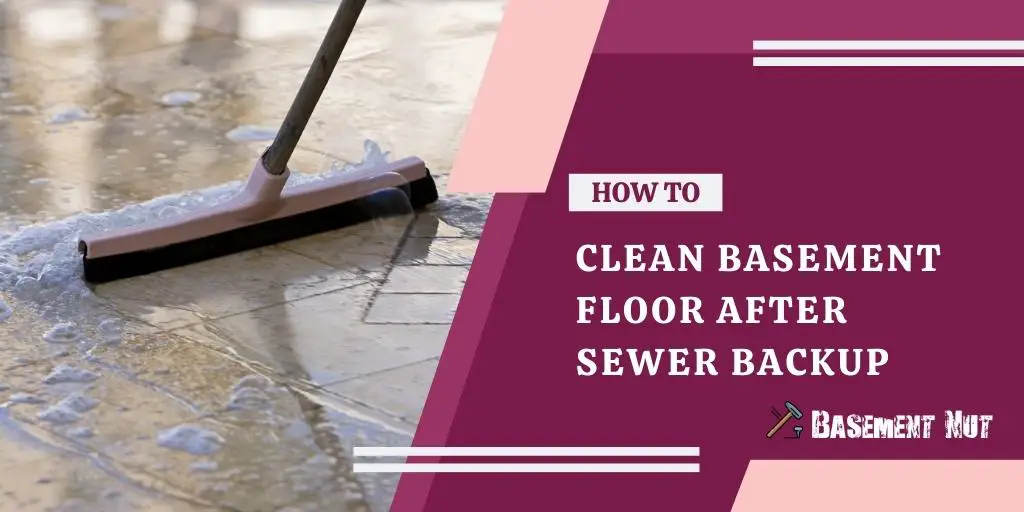
Why Should You Clean Basement Floor After Sewer Backup?
Basement flooding is a common problem in many homes. Although the causes of basement flooding can vary, a sewer backup is one of the most common reasons.
When sewage backs up into your basement, it can carry harmful bacteria and parasites that can pose a serious health risk to you and your family. In addition, the water from a sewer backup can damage your belongings and lead to mold growth.
For these reasons, cleaning your basement floor as soon as possible after a sewer backup is important. Although the cleaning process may be daunting, it is essential to take steps to protect your health and your home. With a little effort, you can ensure that your basement is safe and clean for years to come.
7 Steps to Follow on How to Clean Basement Floor After Sewer Backup
1. Turn Off the Power
The first step you need to take when cleaning up your basement after a sewer backup is to turn off the power to your basement. This is important for safety reasons, as you don’t want to risk being electrocuted by a wet floor. Once the power is turned off, you can begin the process of cleaning up your basement.
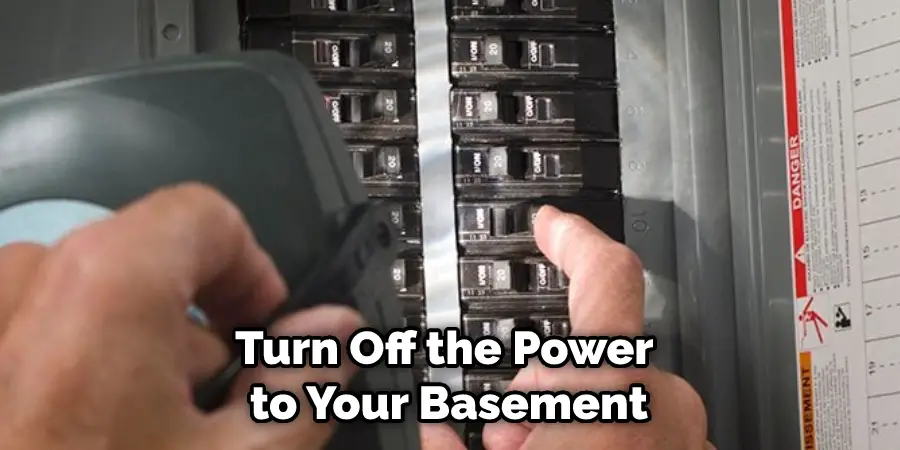
2. Remove Any Standing Water
The next step is to remove any standing water from your basement. This can be done with a wet/dry vacuum or a sump pump. If you don’t have either of these items, you can also use buckets to remove the water. Once all of the water has been removed, you can move on to the next step.
3. Clean and Disinfect All Surfaces
Once all of the water has been removed, you need to clean and disinfect all surfaces in your basement. This includes walls, floors, ceilings, and any other surfaces that may have come into contact with the water.
You can use various cleaners for this step, but make sure to use something that will kill any bacteria or viruses that may be present.
4. Remove Any Damaged Materials
Once all surfaces have been cleaned and disinfected, you must remove any damaged materials from your basement. This includes carpeting, drywall, insulation, and anything else that the water may have damaged. Once all damaged materials have been removed, you can begin the process of repairing your basement.
5. Repair Any Damaged Surfaces
Once all damaged materials have been removed, you will need to repair the surfaces affected by the sewer backup. This may include repairing drywall, insulation, and floors.
You may need to replace these materials entirely if there is significant damage. You will also need to disinfect all surfaces that come into contact with sewage.
6. Replace Any Missing Materials
Once all damaged surfaces have been repaired, it is time to focus on replacing any missing materials. This may include insulation, flooring, trim, and more. If you are unsure how to complete this task, be sure to consult with a professional contractor who can help you get your basement back in tip-top shape.
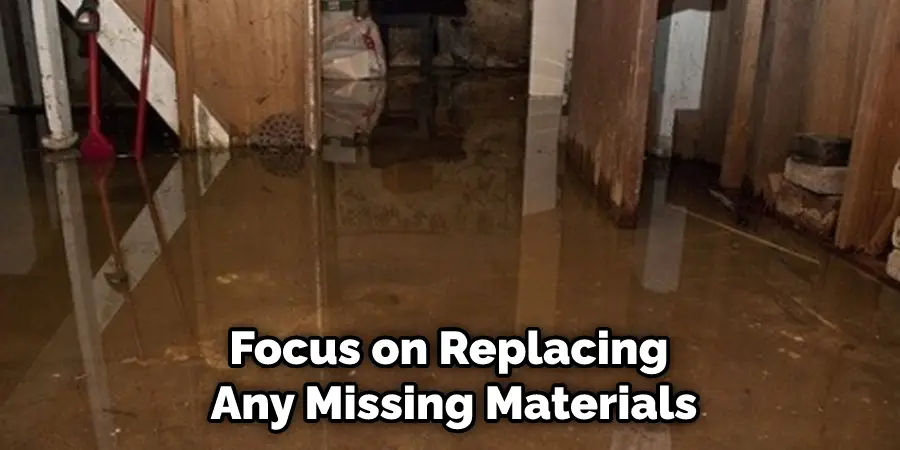
7. Finish Your Basement
The final step in cleaning up your basement after a sewer backup is to finish your basement. This includes painting walls, installing flooring, and doing any other work necessary to make your basement livable again. Depending on the extent of the damage, this step may require professional help.
That’s it! You’ve now learned how to clean basement floor after sewer backup. Be sure to follow these steps carefully to ensure a safe and effective cleanup.
What Not to Do When Cleaning up After a Sewer Backup?
When a sewer backs up, it can be a messy and dangerous situation. Raw sewage can spread disease and contaminate surfaces, making it important to clean up carefully.
However, there are some things that you should never do when cleaning up after a sewer backup. First, never try to clean up the mess without wearing proper protective gear.
This includes gloves, goggles, and a face mask to avoid inhaling bacteria. Second, never use a regular vacuum cleaner to clean up sewage. The bacteria can damage the vacuum and spread to other parts of your home.
Finally, never try to flush the sewage down the toilet or drain. This will only spread the contamination and make the problem worse.
If you have experienced a sewer backup, you must contact a professional cleanup crew who can safely and properly clean the affected area.
How to Prevent Sewer Backups in Your Basement?
One of the most common places for a sewer backup is in your basement. If you have a home with a basement, you can take steps to help prevent this from happening.
First, make sure that your gutters and downspouts are free of debris and are draining properly. This will help to keep water away from your foundation.
Second, have a plumber check your sewage line periodically to ensure that it is functioning properly. Finally, be aware of the signs of a sewer backup and know how to shut off the main water valve in your home.
By taking these simple steps, you can help prevent a sewer backup in your basement. Keep reading for more information about how to clean basement floor after sewer backup.
You Can Check It Out To clean wet carpet in basement
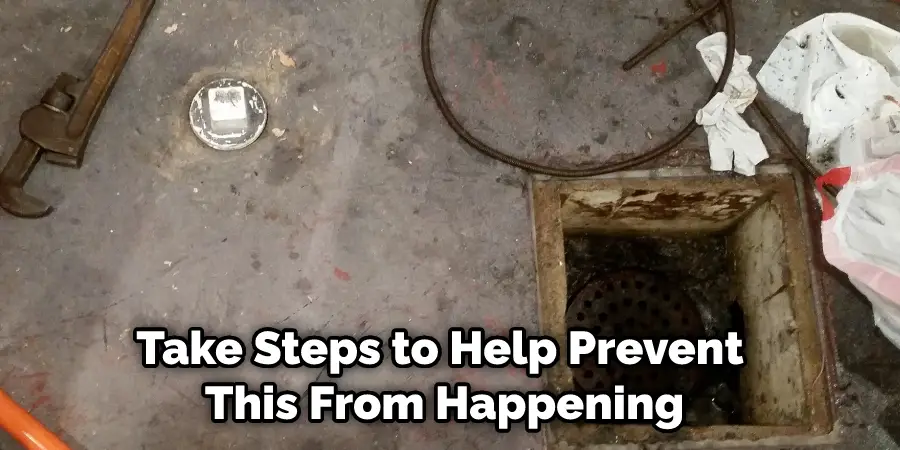
What Can I Use to Clean My Basement Floor After a Sewer Backup?
A sewer backup is a smelly, dirty mess. Unfortunately, it’s also a reality for many homeowners. If you are dealing with a sewer backup, the first step is to call a professional to help you clean it up.
In the meantime, you can do a few things to start the cleanup process. First, open all the windows and doors to air out the basement.
Then, remove any solids from the floor using gloves and a face mask. Once the solids are gone, you can start cleaning the floor with a disinfectant solution.
Be sure to rinse the floor well after cleaning and allow it to dry completely before putting anything back in the basement. With some elbow grease and patience, your basement will look like new again in no time.
How Can I Remove the Smell of Sewage from My Basement?
Basements are often humid and dark, making them the perfect breeding ground for mold and mildew. In addition, basements are often the lowest level of a home, making them susceptible to flooding during heavy rains.
As a result, basements can often develop a musty smell that is caused by a buildup of mold spores, dust, and other airborne contaminants. If you notice that your basement has started to smell like sewage, there are a few things you can do to remove the odor.
First, try to identify the source of the smell and address the problem directly. For instance, if you have a clogged drain, you must clear the blockage to eliminate the odor.
If the smell comes from your laundry area, clean your washer and dryer regularly. You may also want to invest in an air purifier or dehumidifier to help remove the musty smell from your basement.
You Can Chack It Out to Deodorize a Flooded Basement
Will Bleach Kill Mold and Mildew?
Bleach is a powerful cleaning agent that can be used to remove mold and mildew from a variety of surfaces. When used correctly, bleach can kill mold and mildew spores, preventing them from spreading.
However, bleach is also a potent chemical that can cause serious health problems if used incorrectly. As a result, it is important to take care when using bleach to clean mold and mildew.
When diluted with water, bleach can be safely used on non-porous surfaces such as tile and glass. However, it should never be used on porous surfaces such as wood and drywall, as it can cause the material to degrade.
In addition, always wear gloves and ventilation when using bleach, as the fumes can harm your health. With these precautions in mind, bleach can be an effective way to clean mold and mildew from your home.
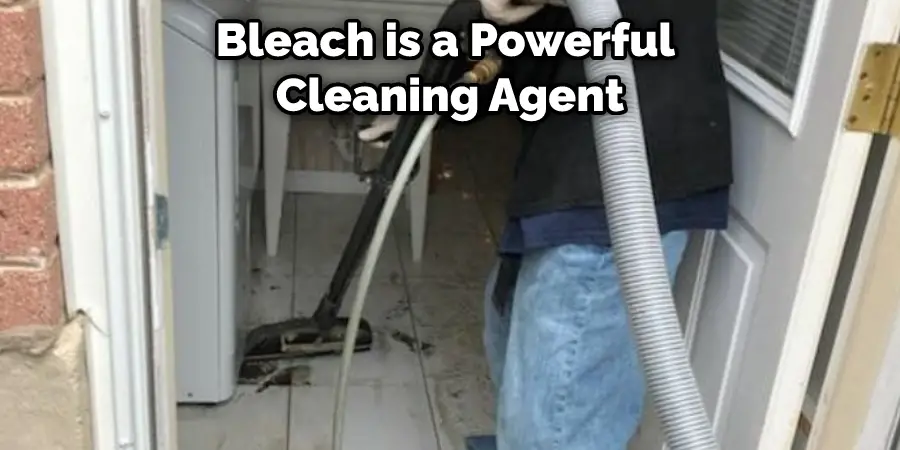
Conclusion
No one likes dealing with a sewage backup, but fortunately, there are steps you can take to clean your basement floor and get rid of all the sewage water and bacteria.
First, assess the situation and determine the extent of the damage. If the backup is contained in a small area, you may be able to handle the cleanup yourself. Otherwise, it’s best to call in a professional.
Once you’ve determined that you can handle the situation yourself, put on some Personal Protective Equipment (PPE), and then use a wet/dry vacuum to remove any loose debris.
Finally, mix together a solution of warm water and laundry detergent and use it to scrub the affected area of your basement floor until it is clean. Thanks for reading our post about how to clean basement floor after sewer backup.
You Can Chack It Out to Finish a Basement Bathroom with Rough-In Plumbing
